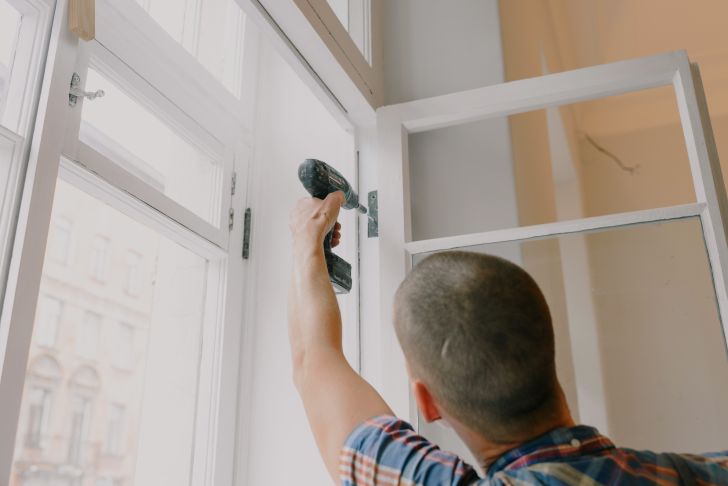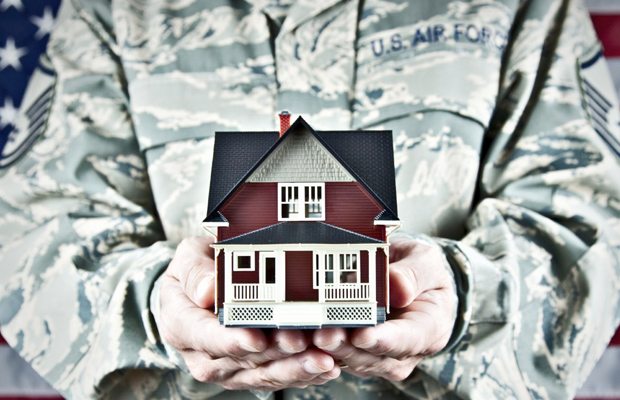Are there any government grants for replacement windows in USA? So, low-income families and senior citizens cannot directly receive window replacement grants from the federal government. Nevertheless, these grants indirectly reach them through state agencies. The state agencies collaborate with local providers to offer free energy-efficient upgrades to eligible homeowners.
However, accessing this assistance is not a straightforward process. It requires navigating through various departments and agencies to determine eligibility and submit applications.
The Government Window Replacement Programs 2023
So, are there any government grants for replacement windows? In 2023, there are four government resources that are worth exploring, further complicating the path to assistance.
Fortunately, there is a starting point for each option, and it is recommended to begin with the Weatherization Assistance Program. This program’s objective aligns with your goal of obtaining window replacements.
Federal Window Replacement Programs
In the year 2023, low-income families and senior citizens can often qualify for grants that cover the costs of window and door replacements. To do so, they must apply for the Weatherization Assistance Program (WAP). This program has a primary goal of reducing heating and cooling expenses by enhancing the energy efficiency of homes.
The funding for the Weatherization Assistance Program comes from the Department of Energy (DOE). Besides, it is implemented by local companies according to the program’s guidelines. These guidelines prioritize projects based on a Savings Investment Ratio (SIR). It helps determine the most cost-effective initiatives to undertake.
Local Providers
Individuals can participate in the federal government’s free window replacement program. To do so, the low-income homeowners need to apply through a local entity affiliated with the Weatherization Assistance Program (WAP). The state agency or designated contractor will assess your eligibility based on the following steps:
- Obtain the contact information for your local agency: Depending on your state, you may find a single online application or a list of participating organizations to contact.
- Complete the application process: Provide the necessary documentation. For instance, you need a proof of income from the previous year. You also must provide information about household size.
- Prepare for an energy audit: A representative from a state-approved provider will visit your home to conduct an energy audit. This assessment will help determine if you qualify for free services based on the Savings Investment Ratio (SIR).
For more detailed information and guidance on applying for the Weatherization Assistance Program, you can refer to the online resource above.
Window Replacement Programs in Florida
Are there any government grants for replacement windows in Florida? Well, Apply for window replacement grants in Florida through different agencies and programs that assist with home improvements for low-income families, seniors, hurricane recovery or preparation, and other purposes. Here are some notable programs:
Low-Income:
- Weatherization Assistance Program (WAP): Provides assistance to improve energy efficiency in low-income households.
- Low-Income Home Energy Assistance Program (LIHEAP): Offers financial aid to eligible individuals and families for home energy costs.
- State Housing Initiatives Partnership (SHIP): Provides funding for housing rehabilitation and repairs for low-income homeowners.
- Section 504 Home Repair Program: Offers loans and grants to elderly individuals for home repairs and improvements.
Natural Disasters:
- Federal Emergency Management Agency (FEMA): Provides disaster assistance, including home repairs and replacements, for those affected by natural disasters.
- Rebuild Florida: Offers assistance for hurricane recovery, including repairs and improvements to damaged homes.
- My Safe Home: Provides grants for wind-resistant improvements to homes in hurricane-prone areas.
Other:
- Property Assessed Clean Energy (PACE): Offers financing options for energy-efficient home improvements, including window replacements.
For more information and to apply for these programs, it is recommended to visit the respective agencies’ websites. Or, you can contact their offices. Please note that program availability and eligibility criteria may vary. So, it is essential to review the specific requirements for each program.
Federal Window Replacement Grant Programs in California
To take advantage of window replacement grants in California, you can submit your application via the WAP website administered by the Department of Community Services & Development. Apart from the nationwide WAP program, California also provides the Low-Income Weatherization Program (LIWP), a state-funded initiative that can assist a greater number of families. https://www.csd.ca.gov/Pages/Residential-Energy-Efficiency.aspx
Moreover, California offers various other energy-efficiency programs for specific purposes, including:
- Farmworker Housing: This program focuses on enhancing the energy efficiency of housing facilities for farmworkers.
- Community Solar Pilot: Aimed at promoting the use of solar energy, this initiative encourages communities to participate in solar power generation projects.
- Multi-Family Energy-Efficiency: Designed to improve energy efficiency in multi-family buildings, this program assists property owners in implementing energy-saving measures.
By exploring these additional programs, Californians can benefit from a range of opportunities to enhance energy efficiency and reduce costs.
Energy Efficient Window Replacement Program in Texas
To access window replacement grants in Texas, you can apply through the website managed by the Department of Housing and Community Affairs (TDHCA). TDHCA provides links to various free government resources, including the nationwide Weatherization Assistance Program (WAP).
The federal grant funds are received by TDHCA, which then distributes the funding to local organizations that assist individuals in need. Your responsibility is to identify and reach out to the entities located near your area.
For example, in the Dallas region, there are four organizations that support the WAP:
- Texas Information and Referral Network: This organization offers information and referral services to connect individuals with resources, including WAP, in Texas.
- Dallas County Department of Health and Human Services: They provide support and assistance related to health and human services, including access to WAP.
- Texoma Council of Governments: This regional organization serves the Texoma area and collaborates with TDHCA to administer WAP services in the region.
- Department of Veteran Affairs: The VA works in conjunction with TDHCA to ensure that eligible veterans can access window replacement grants and other assistance programs.
By contacting these organizations, you can gather information and take the necessary steps to apply for and benefit from window replacement grants in Texas.
What Are the Qualifications of Government Grants for Replacement Windows
To be eligible for the energy-efficient window and door replacement grants offered by the local Weatherization Assistance Program (WAP) organization, low-income families and seniors must meet certain qualifications. These qualifications include:
- Income Level: The household’s income must be at or below 200% of the Federal Poverty Guidelines.
- Receipt of Other Government Assistance: Eligibility can also be based on receiving other forms of free money from the government, such as: Supplemental Security Income (SSI), Aid to Families with Dependent Children (AFDC), and Low-Income Home Energy Assistance (LIHEAP).
The WAP program gives priority to the following groups:
- Elderly Individuals: Senior citizens who meet the income requirements are prioritized for assistance.
- Physically Disabled Residents: Individuals with physical disabilities are also given priority for window and door replacements.
- Families with Children Under 12: Families with children aged 12 or younger are considered a priority group.
- Households with Repeatedly High Utility Bills: WAP aims to assist households that have consistently high utility bills.
In addition to WAP, California also offers the Low-Income Weatherization Program (LIWP), which focuses on three components to achieve its goals of reducing greenhouse gas emissions, saving energy, and generating clean electricity. The specific components of LIWP are not mentioned in the given text.
Other Alternatives
In addition to the Weatherization Assistance Program (WAP) and the Low-Income Weatherization Program (LIWP), there are various other government programs that offer free window replacement grants to low-income families. These programs focus on promoting energy efficiency or providing assistance to specific groups, such as senior citizens.
While the specific programs are not mentioned, typically, these grants are administered through state or county-level agencies. The federal department responsible for establishing the objectives and funding of these programs collaborates with these agencies. To apply for assistance, you would need to contact the relevant state or county-level agency responsible for managing the specific window replacement grant program.
These additional programs aim to support energy efficiency initiatives and assist homeowners in need by providing them with the resources necessary for window replacements. By exploring these opportunities, low-income families can access grants that can improve their homes’ energy efficiency and reduce their utility costs.
LIHEAP
The primary mission of the Low-Income Home Energy Assistance Program (LIHEAP) is to assist low-income households with managing their home utility bills. While LIHEAP may provide grants for window replacement, it is not as common as its main focus is on addressing energy costs. Weatherization, including window replacement, is a secondary objective of LIHEAP.
LIHEAP is administered at the federal level by the US Department of Health & Human Services, specifically the Office of Community Services. The program operates by distributing block grants to each state. The state agencies then allocate the funds to local providers who are responsible for administering LIHEAP at the community level.
To find local LIHEAP providers and determine if you qualify for assistance, you can use the online tool provided. Here’s how to use it:
- Select your state from the dropdown menu.
- Choose the county where you currently reside.
- Click on the yellow dot closest to your location on the map.
- Contact the state-approved provider indicated to inquire about your eligibility for LIHEAP benefits.
By following these steps and reaching out to the designated LIHEAP provider, you can gather more information about the program, its eligibility criteria, and the potential for window replacement grants or other forms of assistance to help manage your home utility bills.
Government Grants for Replacement Windows – Weatherization
Weatherization programs, including those associated with LIHEAP, offer a range of assistance to eligible households. The specific services provided may vary from state to state, but commonly include the following:
- Audits to assess needs: Weatherization programs typically conduct audits or assessments to evaluate a household’s energy efficiency needs. These assessments help identify areas where improvements can be made.
- Free repairs and replacements: Eligible households may receive free repairs or replacements for various components of their homes, for example: furnaces, water heaters, AC systems, windows, sliding glass doors, appliances (such as refrigerators, dishwashers, washers, and dryers), roof components (like shingles, trusses, flashing, and gutters), among others.
- Caulking and insulation: Weatherization programs often focus on sealing air leaks and improving insulation in homes. This includes caulking windows and doors, weatherstripping, and adding insulation to attics, walls, and floors.
- Water conservation measures: Some weatherization programs also include water conservation measures to reduce water usage and promote efficient water management within households.
- CFL light bulbs: As part of energy-saving initiatives, weatherization programs may distribute compact fluorescent light bulbs (CFLs) to replace traditional incandescent bulbs. CFLs are more energy-efficient and can help reduce electricity consumption.
It’s important to note that the specific services and assistance provided by weatherization programs may vary, and eligibility requirements may differ from state to state. To learn about the specific offerings and qualifications in your area, it is recommended to contact your state’s LIHEAP or weatherization agency directly.
Are There Any Government Grants for Replacement Windows in New York?
The New York State LIHEAP program does not explicitly mention free window replacement on its website. However, according to the LIHEAP Clearinghouse Report, 10% of the grant money allocated to New York State is designated for weatherization purposes. This suggests that some level of weatherization assistance, which may include window-related improvements, could be available.
The primary focus of the New York State LIHEAP program is to help low-income households with their heating needs. The program achieves this by providing direct payments to state-approved vendors, such as Con Edison, for electricity, natural gas, oil, and other fuels.
Benefits of NYS LIHEAP
Here are some of the benefits and services offered by NYS LIHEAP:
- Regular benefits: Eligible households can receive regular LIHEAP benefits. The range is from $21 to $675, depending on factors. For example, the income, household size, and heating costs.
- Arrears supplement benefit: In cases where a household has accumulated significant heating-related debts, LIHEAP offers an arrears supplement. It gives you benefit of up to $10,000.
- Emergency benefits: LIHEAP provides emergency benefits to prevent utility service shutoffs. So, the eligible households get a help to deal with critical times.
- Heating equipment repair and replacement: The program may assist with the repair or replacement of heating equipment, ensuring that households have reliable heating systems.
- Cleaning and tuning of heating equipment: LIHEAP supports the cleaning and tuning of heating equipment to optimize its performance and energy efficiency.
- Cooling assistance: In addition to heating support, LIHEAP may provide assistance for purchasing air conditioning units to help with cooling needs during hot weather.
While free window replacement may not be explicitly mentioned, it is possible that weatherization services, including window-related improvements, are offered as part of the weatherization funds allocated by the program. To obtain detailed information and determine eligibility for specific services, it is recommended to contact the New York State LIHEAP program directly.
Are There Any Government Grants for Replacement Windows in Pennsylvania?
The Pennsylvania LIHEAP website does not explicitly state that free window replacement is available. However, according to the LIHEAP Clearinghouse Report, the program allocates 15% of its federal grant money to weatherization services. This suggests that weatherization assistance, which may include window-related improvements, could be provided.
In Pennsylvania, the LIHEAP program primarily focuses on two benefits aimed at helping low-income families with their heating bills:
- Cash grants: LIHEAP offers one-time cash grants that are directly sent to utility companies on behalf of eligible households. These grants help offset heating costs and ensure that families can maintain a warm and safe home environment.
- Crisis grants: Crisis grants are intended to address heating emergencies faced by low-income households. Some examples of heating emergencies covered by crisis grants include:
- Broken equipment or leaking lines: Assistance is provided to repair or replace broken heating equipment or fix leaking fuel lines.
- Lack of fuel or dwindling supply: Crisis grants can help address situations where a household has little or no heating fuel or is running out of fuel.
- Danger of service termination due to delinquency: If a household is at risk of having their heating service terminated due to delinquency, crisis grants can help prevent this situation.
While the Pennsylvania LIHEAP website does not mention free window replacement specifically, the allocation of funds towards weatherization services suggests that some level of weatherization assistance, including window improvements, may be available. To obtain more detailed information and determine eligibility for specific services, it is advisable to contact the Pennsylvania LIHEAP program directly.
Home Improvement Credit
The Internal Revenue Service (IRS) sponsors the Energy Efficient Home Improvement Credit (EEHIC) program, which includes a window replacement program. Through the EEHIC, homeowners can claim non-refundable tax credits for installing energy-efficient building envelope components, including exterior windows and skylights.
The tax credit available for window replacements is up to $600. To qualify for the credit, the installed windows and skylights must meet the Energy Star Most Efficient certification requirements, which ensure their energy efficiency.
It’s important to note that the EEHIC offers a total credit of up to $3,200 annually across various energy-efficient home improvements. Therefore, it’s recommended to establish a schedule with your contractor to maximize the value of this government grant. By carefully planning and coordinating your energy-efficient home improvement projects, you can take full advantage of the available tax credits.
In addition to the $600 credit for windows and skylights, the EEHIC also provides the following credits for other eligible energy property costs:
- $1,200 you can use for energy property costs (specific limits)
- $2,000 only for heat pumps, boilers, and biomass stoves
These additional credits are available for specific energy-efficient improvements. So, these can contribute to the overall value of the tax credits you can claim through the EEHIC program.
It’s essential to consult with a tax professional. Or you can refer to the official IRS guidelines. They can give you the most up-to-date and accurate information regarding the Energy Efficient Home Improvement Credit (EEHIC). For example, they can tell you specific eligibility criteria, documentation requirements, and potential limitations.
Energy Star
The Energy Star program does not provide direct window replacement grants. But it offers conceptual grants through future cost savings on utility bills. Installing Energy Star certified windows help households get a nationwide average reduction of approximately 12% in utility bills. It can be their oil, gas, or electricity consumption.
Energy Star is a government-backed symbol for energy efficiency, supported by the US Environmental Protection Agency (EPA). Energy Star promotes utility-sponsored rebates for various energy-efficient products. For example, appliances, heating and cooling systems, and light bulbs. However, it does not specifically offer grants for windows or doors.
To make the most of the conceptual Energy Star grant, it is essential to view it as an investment with long-term benefits. The program does not provide upfront financial assistance. But the potential cost savings on utility bills over the lifetime of the energy-efficient windows can make the investment worthwhile.
Financing options for window replacement projects can help spread the payments over several years. This is more manageable and allowing homeowners to leverage the long-term energy savings to offset the cost.
Illustrative Figures
Here are some illustrative figures to consider:
- Average cost to replace 25 panes and frames: $15,000
- Estimated lifetime energy savings over 25 years: $12,000
- Annual gas and electricity expense: $4,000
- Average savings on utility bills (12%): $480 per year
These figures demonstrate that while there may not be direct grants available for windows through Energy Star, the potential annual savings on utility bills can accumulate over time. Therefore, it can help recoup the investment in energy-efficient windows.
It’s important to note that the actual costs and savings will vary depending on factors. It can be the location, energy consumption, and specific window replacement choices. Furthermore, it is advisable to consult with local window replacement professionals and consider financing options. This way can determine the potential return on investment for your specific situation.
Are There Any Government Grants for Replacement Windows for Seniors?
If you need the answer for your question “Are there any government grants for replacement windows for elder people? Senior citizens have access to specific window replacement programs that cater to their needs, which are: LIHEAP and WAP. In addition, there is an additional program called Section 504 offered through the US Department of Agriculture (USDA).
Senior citizens typically have a shorter life expectancy. Also, they may plan to remain in their homes for a shorter period. In this case, the long-term utility bill savings of 12% annually, as offered by Energy Star, may have less impact on their individual return on investment calculation.
Are there any government grants for replacement windows for senior citizens? These people can explore USDA Section 504 grants, which can provide up to $7,500 for window replacement. Note that the project addresses health and safety hazards. To qualify for Section 504 grants, seniors must meet the following criteria:
- Be the homeowner and occupy the residence.
- Reside in an eligible rural area.
- Be unable to obtain a loan from other sources due to bad credit.
- Have a family income under 50% based on the area median.
- Be unable to repay a restoration loan.
These criteria aim to support senior citizens who face financial constraints and reside in rural areas. Also, the aim is to provide assistance to address health and safety concerns through window replacement.
Sources:




